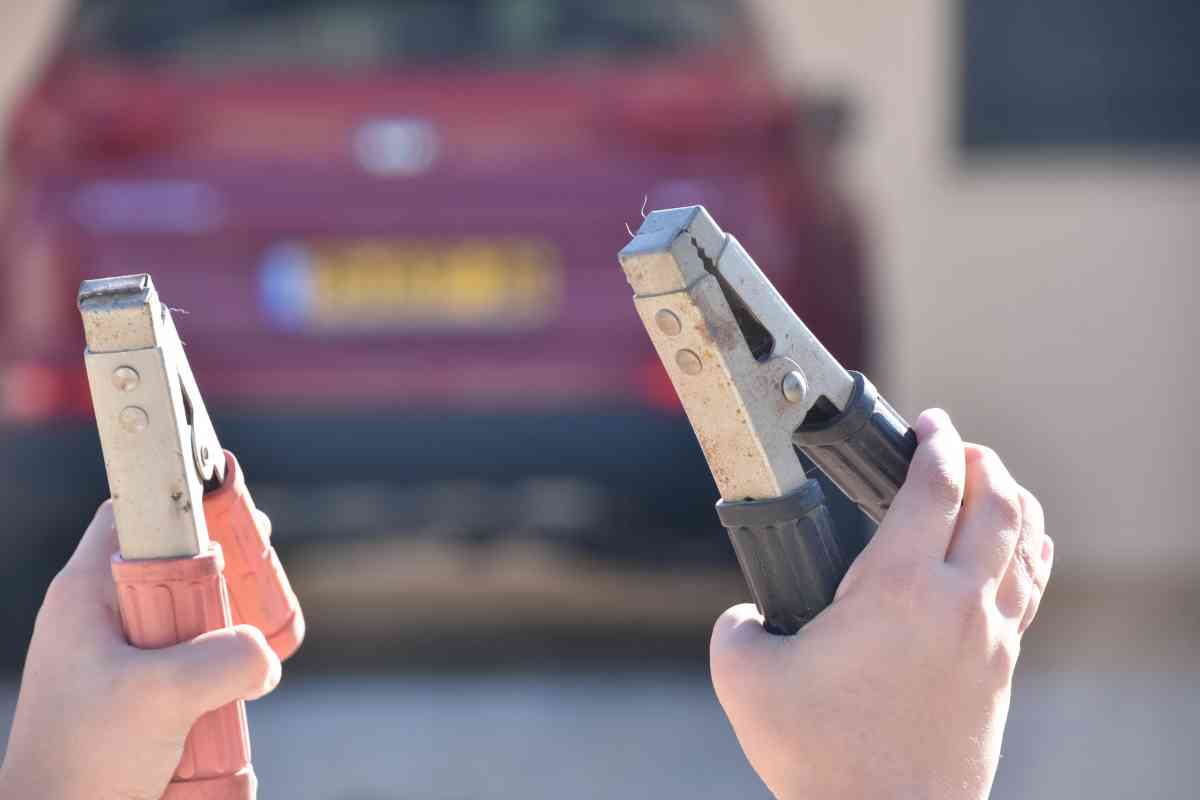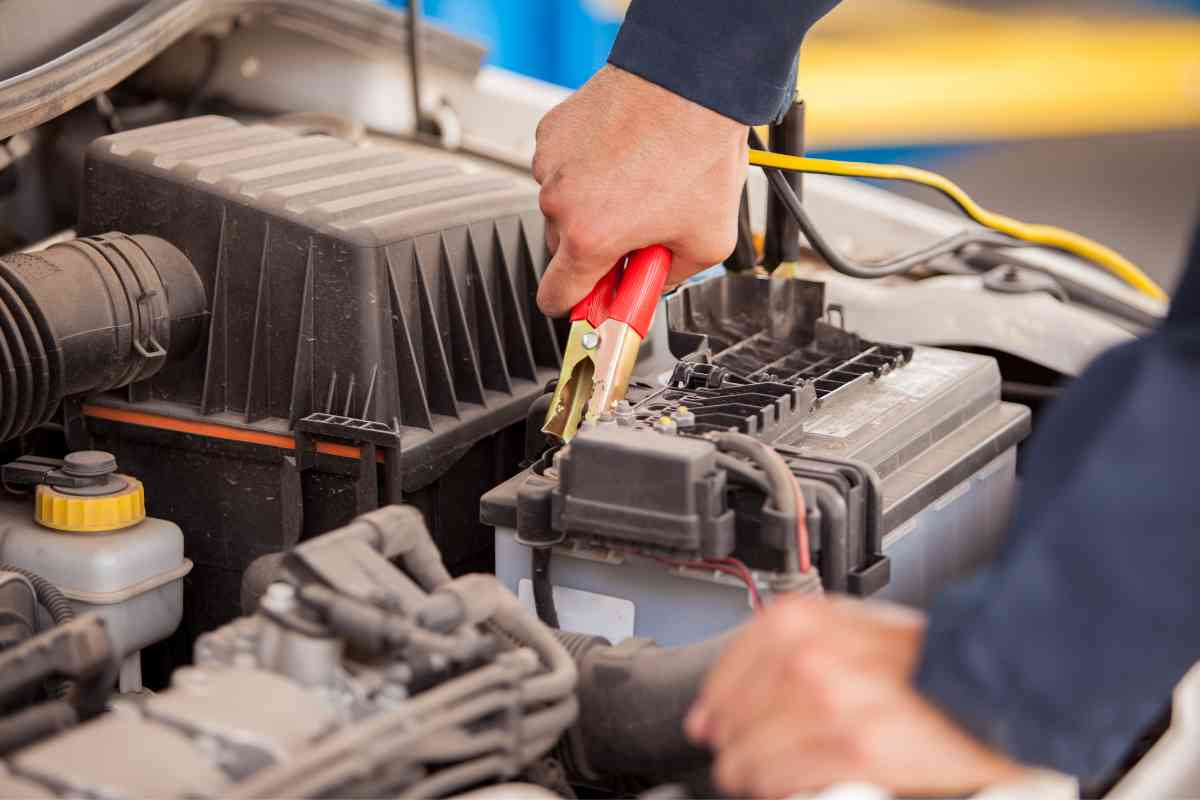How Long Do You Have To Run A Car After A Jump To Recharge The Battery?
A dead car battery can be a bummer, but once it gets jump started and recharged, the car needs to keep running to allow the battery to reach a full charge.

How long do you have to drive a car after you jump it to keep the battery charged?
We recommend allowing a car to run for 30 minutes after a jump to recharge the battery so it won’t be dead the next time the car gets turned on. The car needs to run because the battery only gets a 50-75% charge from a jump. When it runs, the alternator will help it get fully charged.
Based on various tests and research, we found the 30-minute mark to be the ideal time to allow for a recharged battery to reach a 100% full charge. We will explain how this works and why this is the best strategy below.
How Long To Run Car After Jump To Recharge Battery
If the car battery is completely dead and needs to be recharged, it’s necessary to know how long it takes for the battery to recharge.
The car should run for about 30 minutes after a jump to allow time to recharge the battery. This is a general rule, and waiting this long allows enough time for the dead battery to charge so it won’t die next time when trying to start the car.
The first thing to do is find the battery and ensure that the jumper cables are correctly connected. It only takes a few minutes for the jump start to complete.
Also, confirm the jumper cables are not touching any metal or other parts of the car when connected. If they touch metal, then they can cause a spark that can damage the car’s electrical system.
Once the charge completes, disconnect everything and allow the car to stay running while idling or driving for at least 30 minutes.
Why Do You Need To Run A Car After Jump To Recharge The Battery?
Running a car after a jump to recharge the battery is common. People usually do it when the engine is running and not driving.
This practice helps to recharge the battery and extends its life. The reason for this is that when one starts their car, the alternator sends energy to charge up all of the electrical systems in the vehicle, including headlights, wipers, etc.
Jump starting can only charge up to about 50-75% of the battery’s capacity. The other 25-50% must be filled by driving the car for a few minutes.
When one shuts off their engine, this charging process stops and then starts again when one re-starts their engine. So a battery that recently died doesn’t get a strong enough charge off the jump, so turning it off immediately means it will die again.
Does The Car Battery Recharge While Idling?

Idling is the act of running an engine while the vehicle is not in motion. Idling is generally considered to be a reliable practice to charge the battery after jumping it.
The car battery does recharge while idling, but it is not as efficient as when the engine is on.
The battery will only charge when the alternator is running, so it’s required to allow the car to idle if it cannot be driven at the time.
Driving the car around is better than just letting it sit idle. This is also considered a waste of fuel, and it may take longer for the battery to recharge this way fully.
How Long Does a Car Battery Last Without Driving?
The car battery is a vital and important part of the car. It supplies the power to run the engine, lights, and other electrical components. However, it is not possible to drive a car without a battery.
So, when a car is not being used, the battery can die. It will last for four to six weeks before it dies, depending on the weather if the car is sitting there unused.
This is why driving a car at least once per week is recommended to avoid this situation. It can also cause the battery to decay faster.
Can A Car Battery Be Too Dead To Jump?
A car battery can be too dead to jump because of various reasons. It could be due to the age of the battery or because the battery has been discharged and then charged more than once in a short span of time.
However, this is not likely in many scenarios. Typically, the battery needs a jump start from another vehicle using jumper cables.
It’s recommended to use jumper cables to connect the two batteries and then turn on the car’s engine with a working battery.
By leaving the car running after jumping it, the battery can recharge, which helps it last longer too.
Why Does A Car Battery Die?
Car batteries die when the power drains and it can happen for various reasons.
This includes leaving the lights on, loose or corroded battery connections, extreme temperatures, a malfunctioning alternator, or the battery being simply old and worn out.
Leaving The Lights On
When you turn on the car headlights and leave them on for a prolonged period of time, this will result in the car battery dying. This is because the headlights are very bright, and they will drain the battery.
The same is true for lights inside the car. They pull from the battery while the car and alternator are off, pulling all the power straight from the battery. Avoid this by always turning the lights off when the car is off.
Loose Or Corroded Battery Connections
Another thing that can cause a car battery to die is loose connections and corrosion. This typically results in car battery acid surrounding the edges and impacting the connection of the battery.
Drivers must often check and tighten connections, so they don’t become loose or corroded over time. This causes more wear and tear on the battery and can ultimately shorten its lifespan.
Extreme Temperatures
Extreme temperatures can hurt the battery in a car. The battery is designed to work best at room temperature, and when it is too cold or too hot, it has more difficulty powering the engine.
The problem with extreme temperatures is that they can cause the battery to die faster than normal. This can happen because the chemical reactions within the battery are slowed down by cold weather and heat.
This is most common during the winter in freezing temperatures.
Malfunctioning Alternator
The alternator serves an important purpose for the car battery. When the car is turned on and running, the alternator also runs, allowing the battery to get a full charge and remain charged.
If the alternator is malfunctioning or not working correctly, this can cause the battery to die because it’s unable to reach a full charge unexpectedly. When determining battery issues, always check the alternator too.
Battery Is Old And Worn Out
When the battery is old or extremely worn out, it will die faster and unexpectedly because it can’t reach a full charge. The average battery lasts for 3-5 years, depending on the amount of driving and the weather.
Key Takeaways
- A car must run for about 30 minutes after a jump to allow the battery to recharge up to 100% because a jump only gives a 50-75% charge.
- The car battery will die from leaving the lights on, loose connections, corrosion, extreme temperatures, and a malfunctioning alternator.
- The car battery can recharge when the car is idling or being driven around after a jump.
